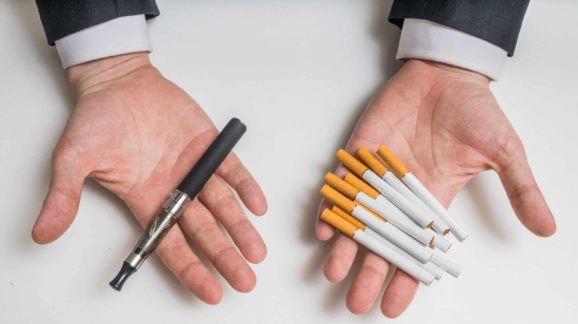New York Times Runs Stealth Anti-Vaping Ad as Op-ed

Readers of The New York Times deserve better than advertising masquerading as righteous opinion writing. While reporters at Times get credit for exploring and exposing conflicts of interest among its reporters or sources, their commitment to ethical journalism is not consistently applied. See the paper’s coverage of e-cigarette controversies. In “How Big Tobacco Got a New Generation Hooked,” writer Alex Bogusky criticizes the marketing practices of tobacco and e-cigarette companies. But neither Bogusky nor the Times disclosed the fact that his firm has been paid hundreds of millions of dollars to advertise on behalf of the anti-tobacco industry! Had readers been informed, they might wonder if that makes Bogusky’s piece a true expression of his opinion, or if it is merely marketing material for a client, or an advertisement for his firm?
Bogusky, co-founder and the chief creative executive at the advertising agency Crispin, Porter, & Bogusky (CPB), paints himself and his firm as bravely altruistic for rejecting both tobacco industry money and, now, vaping industry money as well. But, as CPB knows first-hand, landing accounts from the anti-tobacco industry can be just as lucrative. For example, in 1999 the Truth Initiative awarded Bogusky’s firm, along with Arnold Worldwide, a combined $150-$225 million annual contract to create and run its anti-smoking advertisements. And that’s just one of the anti-tobacco clients CPB has had over the years.
As the smoking rate among adults and adolescents has dropped to historically low levels, traditional anti-tobacco entities have shifted their attention and money to the issue of e-cigarettes. Despite mountains of evidence that e-cigarettes are about as harmful as caffeine and that they are effective at helping people quit smoking, these groups have spent untold millions (potentially billions, collectively) to foment public fear and pressure governments to ban or severely restrict smokers’ access to these potentially life-saving products.
In the dozens of stories published on e-cigarettes at the Times, reporters—nearly without fail—have insinuated that any skepticism about the youth e-cigarette “epidemic” and opposition to the fear-based movement to ban or restrict e-cigarettes is motivated by individuals’ or groups’ financial links to the industry. But, when it comes to those individuals and groups being paid to convince the public that e-cigarette use is “epidemic” and lobby governments to enact restrictions, the Times strategically avoids exploring these financial connections.
An op-ed is not an investigative piece, and perhaps the Times does not require conflict-of-interest statements from opinion contributors. Yet, choosing to publish an opinion piece written by the head of a marketing firm raises questions, primarily:
Does Crispin, Porter, & Bogusky—a for-profit firm—count any anti-vaping groups among its clients?
If so, the Times unwittingly (or intentionally) allowed CPB to use its opinion pages as a free platform for one of its marketing campaigns. Even if CPB doesn’t have a current anti-vaping client, the piece still reads like an ad: a commercial to let anti-tobacco and anti-vaping groups know that CPB is open for business and happy to take some of the millions of dollars they’ve been throwing around. In either case, readers of the Times should have been informed of Bogusky’s financial conflict so that they would know his “opinion piece” is more likely just marketing in disguise.